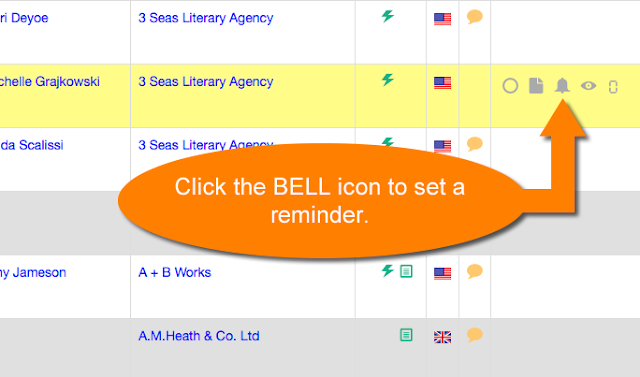My current WIP is an urban fantasy serial. I thought I'd take a break from the writing to give myself a refresher course on the business side of publishing.
Pantsing a book--or even a series--is one thing, but authors must never pants their way through their careers. Better to lay good solid track down now before I get too deep! We all know that revisions can be a trainwreck. :)
There is a certain appeal to the sound of the words "three book deal".
I remember the first time I read those words—my favorite author had just announced a deal to keep a beloved series going with a six figure payout. I was excited to learn there were more books coming…but those words curled themselves into a corner of my writer's brain and never left. Without realizing it, I'd set a goal.
I've long abandoned the idea of snagging a six figure payout for my work but the idea of a multi-book deal never went away. At the time I had been writing my first novel and knew that it wouldn't be a stand alone book in a stand alone world.
Choosing the Series Track
There seem to be two basic models for writing a series: there is the central idea/world with loosely-linked stand alones or there is the sequentially-linked stand alone format. When deciding to develop a series, we often choose one model or the other without ever thinking—but, once chosen, that model must be followed to the end.
I'm not sure editors want to hear the words "debut author" and "series" in the same query letter. There is a lot of risk in taking on the first of a series if the book can't stand alone. But isn't that why we pitch it as a series? You ask.
It is…but if you want to sell it as a series, you need to make sure that book will stand on its own legs. In fact, every book needs to do that—stand on its own. Very few readers like picking up a story in mid-thought and the dislike being left hanging even more.
I picture a series as I would a train—I'm the engineer and each of the boxcars is an installment. They are all linked together but they are each their own.
Continuity
A series isn't a three hundred thousand word novel that gets broken up into chunks. It's a collection of novels connected by themes and characters. A writer shouldn't assume that, in order to read the fourth installment of a talked-about series, a reader will run out and buy the first three books to study up in advance. No one likes extra homework.
That's why it's important to make each book stand on its own. But it’s a series! You insist. My characters have history! Yes, they do…which is why a writer must be sure the series has continuity.
When writing a new installment in a sequential-type series, you have an obligation to provide backstory. Please, do it with skill—no info dumps. Often, a few lines here and there serve as reminders of key elements to keep old readers in the loop and new readers in the know. Balance is key, however.
Continuity is also important in the loosely-linked format—you need to provide a balance of unique elements while still reminding the reader there are other stories to be explored in the series.
Once that balance is found, the stories of a series will display a certain continuity that readers crave in a series. You want those books to be like boxcars in a train: separate yet together. Continuity can be thought of as the hitches between the cars—it will help the reader view the series as a whole (good for consequential book sales) while letting them enjoy one book at a time.
Control
Perhaps you are the writer who is enjoying writing your story and is wondering if the story has series potential.
Maybe you are exploring future book plots, possible character interactions, subthemes and story lines. The key to writing a successful series, however, isn't how far you can blow that book out—it's how well you can control it.
Once again, I envision boxcars on a train (okay, I guess I have a thing for trains. Living where I do, it's hard not to.) In this case, each of the cars are relatively similar in size and shape. Sometimes the train has a tanker or a coal bin punctuating the link up—and the change is refreshing, in a way.
I am not thinking circus train, where one car is a box full of sad clowns and the next is a cage with giraffes hanging out the top. If your series begins to look like that, it means you let an element grow out of control—either a story line got away from you or a character is growing too fast to be contained by the story. Either element will run you into trouble and cause your series to falter…just like that circus train whose engineer doesn't know there's a low bridge around the next bend.
How do you control your stories from ruining your series? You need to always be looking ahead. Keep your characters in check. Know where story lines are going so they don't diverge so hard they split the series or converge too soon in premature collisions. Keeping tight control on the series will help you prevent crashes.
Cancellation
Another reason you may not want to consider—but absolutely must—is cancellation.
There are many reasons why a series gets cancelled and not all of them have to do with the series or even the writing. Sometimes publishing houses change direction. Editors leave. Philosophies change. Sometimes the money dries up and the house closes their doors.
If that were to happen, where do you want to be in your series?
That's why each book must be a stand alone—if there isn't a book to follow, do you want your readers satisfied or ripping their hair out in frustration? You can always pick up a well-written series someplace else…but if you alienate your readers by leaving them stranded, they won't forgive you so easily.
Does Your Story Have Series Potential?
Little did I know, back when writing my stand alone book, I was, in fact, laying the groundwork for a potentially successfully series. My publisher has since contacted the second book and is wondering when the third will show up in her inbox. I still have the responsibility to make sure each of the other books stand on their own feet.
While any story has the ability to spin off, series need better planning. However, with a little foresight, you can evaluate your work and make the important decision of turning your stand alone into a series.
You simply must make wise engineering decision to keep your work on track.
Ash Krafton is a speculative fiction writer who, despite having a Time Turner under her couch and three different sonic screwdrivers in her purse, still encounters difficulty with time management. She's the author of the urban fantasy trilogy
The Books of the Demimonde as well as
WORDS THAT BIND. She also writes for YA and NA audiences under the pen name AJ Krafton.
THE HEARTBEAT THIEF, her Victorian dark fantasy inspired by Poe’s “The Masque of the Red Death”, is now available.





